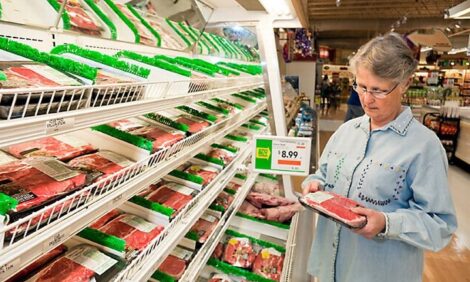



Grazing Management in Dry Times
By Jeff McCutcheon, Extension Educator, Knox County. OSU Extension BEEF Team. Graziers with whom I have the privilege to work are concerned.Many are reporting 0.4" total rain for the month of May and the average temperature 10 degrees hotter than normal. This translates into grass growth slowing and even stopping, right in the peak production period for our cool season pastures. What is a grazier to do? Relax. Remember, we have been here before - dry periods are expected, but not enjoyed. Be sure to check out the drought information published in 2002 mentioned above if you don't believe me. Of course, if you just started managing grazing in the last two wet years, consider this a crucial part of your education. Many experienced graziers refer to it as the school of hard knocks.
Rotations need to slow down. Grass is growing slower, it takes longer to start regrowth after being grazed and it takes longer to reach optimum grazing mass (height) for the next grazing. The number of days grazing a paddock can be increased, as long as you do not over graze. The rest period needs to increase. For most graziers this means pulling more acreage into the rotation. Many use fields where they made first cutting hay. Another consideration is unused fields in your area. Every year I get calls from landowners looking for producers to mow their fields and take all the hay. They just want it mowed. Check around, many of these could easily be grazed.
Every grazier works to protect their perennial forage resource. Do not overgraze! Overgrazing is something we try to avoid in normal years, but critical in dry ones. Overgrazing during a drought can cause slower recovery when we do get rain, reduced productivity even longer after recovery and can cause stand loss.
During dry periods we need to be extremely protective of our residual. Residual is the term used for the amount of green forage left after grazing. Residual is an important aspect of managing grazing. In a dry year it becomes even more critical. The amount of residual has an effect on many things.
The amount of residual affects root growth. Many of you have seen the study from 1955 on leaf area removal and root growth. This data showed that at 50% leaf removal only 2% of the roots stopped growing. At 60% leaf removal 50% of the roots stopped growing. All of the roots stopped growing at 80% leaf removal. A healthy root system helps the plants survive the dry times. If more than 50% of the leaf area is removed then root growth stops. Root growth is used to capture more water and nutrients. At the very least this slows re-growth.
The amount of residual affects re-growth. Green leaves are needed to capture sunlight for photosynthesis. This creates the non-structural carbohydrates needed to fuel re-growth. Without enough leaf area the forages must fuel re-growth from their stored reserves. Growth fueled by the root reserves is slower than growth fueled from active photosynthesis.
The amount of residual affects water absorption by the soil. Grazing below 1200-1500 lbs./DM per acre or 2-3" will allow most of the rain that does come to run off and not be absorbed by the soil. A classic forage study from the 1930's shows the runoff results from a 10% slope where three inches of rain was applied through a sprinkler system over 90 minutes. Pasture grazed to 95% cover experienced a little over 10% runoff. Overgrazed pasture, 50% ground cover, lost 75% of the rain that was applied.
More leaf area means less water runoff. The more vegetative material you have will shade the soil and slow the movement of rain allowing the water to be absorbed by the soil.
When we consider grazing management during dry times remember that without rain pastures grow slower, and close grazing will compound the problem. Slow growth means the rest between grazing needs to be longer. Do not take more residual to allow for this rest. It may get to the point where you need to consider other options, like annual forages, supplemental feeding, and even penning the animals up and feeding them. If growth stops, the worst option would be to open up all of the gates letting animals overgraze the whole farm. Dry-lotting them may be the best option.


